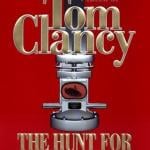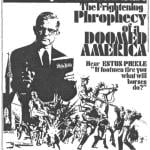Tyler F. Williams posted some interesting thoughts on the season at his Codex blog on Christmas Eve, but instead of commenting on the usual accounts in Matthew and Luke, he cited passages from John and Revelation that put the birth and incarnation of Jesus into their broader cosmic — even apocalyptic — context:
The passage continues to recount of a great war in heaven between Michael and his angels and the dragon… and how the dragon suffered an initial defeat and then a final defeat and how God’s kingdom has come the kingdom of God and the messiah… etc. So here we have a surrealistic and highly symbolic portrayal of the birth of Christ and its cosmic and spiritual implications: that with the coming of Christ there erupted a great war in the heavens, a war in which God was ultimately victorious.
This sounds more like something Gandalf or Elrond would say in The Lord of the Rings than anything you would think you would find in the Bible! And its something we really don’t know what to do with. From early on we are brought up to trust our senses and be skeptical of anything that can’t be verified by them. Most of us have a hard time believing that the world as we see it is really not the world as it is. And even if we believe it, we don’t seem to live any different because of it!
But the reality is (at least the reality presented in the Scriptures) that the world as we see it is not the world as it is. And Christmas as we typically see it – a cute baby in a manger – is not Christmas as it is.
It’s kind of like The Matrix… when we accept Jesus as Lord and Savior, when we take the blue pill, so to speak, and a whole new reality opens up to us. We recognize the world that we thought we knew is really only some of the story. (Of course, a major difference between reality and The Matrix is that there is continuity between the world or our senses and the spiritual world… rather than discontinuity as in The Matrix.)
So the first lesson I want us to take home with us today is that There’s More to Christmas than Meets the Eye. The birth of Jesus represents an event of such spiritual magnitude that is only surpassed by his death on the cross — and that should amaze us!
This reminds me of how I have often said, only partly in jest, that one of my favorite Christmas movies is The Terminator (1984). As I wrote a few years ago, in my review of the third film:
Thus, The Terminator is a sort of R-rated version of the Nativity story. Just as the birth of Christ took place against the backdrop of a cosmic war in which the final outcome was never really in doubt, and just as the birth of Christ was marked by the slaughter of the innocents in Bethlehem, so too the conception of John Connor is soaked in the blood of the battles he is destined to fight.
The sequels have messed my analogy up, of course, but if you are inclined to look at the original Terminator as a stand-alone film, as I am, then I think my analogy still works pretty well.
And now for something completely different… John Mark Reynolds at the Middlebrow blog concluded his own musings on Christmas Eve with this look at Beauty and the Beast (1991):
Disney’s Beauty and the Beast is one of the greatest films of all time, but it severely distorts the fairy tale on which it is based. The film Beauty and the Beast has perverted the original story’s folk wisdom and its connection to reality. When I first went to see Beauty and the Beast, it was with the original folk tale in mind. The musically stunning opening number featured a young woman singing that she wanted so much more than “this provincial life” and I knew what was coming next . . . or thought I did.
The ancient Beauty and the Beast is the story of a family with several daughters. One daughter is humble and knows her place, but the other daughters are vain and desire more than they have. When their father loses his wealth, the wicked daughters are unhappy, but the godly daughter is content. The father regains his riches and the bad sisters demand costly gifts while the pious younger daughter demands nothing but a single red rose. In the end, the patience and humility of the justly named Belle, whose form matches her soul, are rewarded. Beauty’s Christian, sacrificial, love transforms even a Beast and she is revealed as fit to rule.
In the Disney film this message is turned on its head. The common folk are crude in the style of their animation and in their characters. Small town, provincial values and folk wisdom, are shown ridiculous and stifling. Belle is rewarded for being discontent with her lot and recognizing her own superiority. In the end, the only people she loves, her father and the Beast, are aided because she loves them and she is a superior creature. The townspeople are annihilated and Belle is left to rule in a castle with her prince. It is her love of self that motivates her love of others. Because she is self-confident, she can love those wise enough to see her true value. She demands more of life than she has and she gets it.
It is not the fairy tales that lie. It is the modern telling of them, close enough to still resonate, but subtly changed that fail. Beauty and the Beast is a lovely film, but full of falsehoods. It has value as a work of art, but little value as a reflection of reality. Still, isn’t this simply all my opinion? Who am I to say what is right when it comes to aesthetic goodness, truth, or beauty?
Discovering this is the key to happiness this Christmas.
It has been a few years since I last saw the Disney version of this story — or, for that matter, the Jean Cocteau version, which does include Belle’s greedy sisters — so I can’t comment on this interpretation in any detail. I do find it interesting, though, that animator Glen Keane has talked, on the Disney DVD, about the influence that his Christian faith had on his work on the film.












